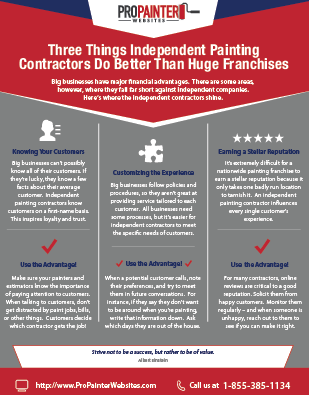What Role Do Proper Shades Play In Boosting Your Brand Name'S Attractiveness In Industrial Outside Paint? Discover The Key Elements That Affect Your Decisions
What Role Do Proper Shades Play In Boosting Your Brand Name'S Attractiveness In Industrial Outside Paint? Discover The Key Elements That Affect Your Decisions
Blog Article
Posted By-Yu Post
When it involves commercial external paint, the shades you pick can make or damage your brand's charm. Understanding exactly how different colors affect understanding is essential to drawing in consumers and constructing depend on. But it's not almost individual preference; neighborhood patterns and policies play a substantial function too. So, just how do more information discover the best balance between your vision and what resonates with the community? Allow's check out the vital aspects that guide your color choices.
Comprehending Shade Psychology and Its Impact on Organization
When you pick shades for your business's outside, recognizing color psychology can dramatically influence exactly how potential consumers regard your brand name.
Shades evoke feelings and set the tone for your organization. For example, blue frequently shares count on and professionalism, making it ideal for banks. Red can create a feeling of urgency, best for restaurants and clearance sales.
Meanwhile, eco-friendly represents growth and sustainability, interesting eco-conscious consumers. Yellow grabs interest and sparks positive outlook, however excessive can bewilder.
Consider your target audience and the message you intend to send out. By choosing the appropriate colors, you not only boost your curb charm but additionally straighten your picture with your brand name worths, eventually driving customer interaction and loyalty.
Studying Local Trends and Rules
How can you guarantee your exterior painting choices reverberate with the community? Beginning by researching local patterns. Go to neighboring organizations and observe their color design.
Make note of what's prominent and what feels out of place. This'll assist you align your options with community visual appeals.
Next, examine regional laws. Several towns have standards on exterior shades, particularly in historical areas. You do not intend to spend time and money on a scheme that isn't compliant.
Engage with regional entrepreneur or community teams to collect insights. They can provide valuable feedback on what colors are well-received.
Tips for Integrating With the Surrounding Setting
To create a natural look that mixes perfectly with your surroundings, take into consideration the native environment and building designs close by. Beginning by observing the shades of neighboring buildings and landscapes. Natural tones like environment-friendlies, browns, and soft grays usually work well in all-natural setups.
If your residential property is near lively metropolitan areas, you may pick bolder hues that reflect the regional power.
Next off, think about the building design of your structure. Traditional designs might benefit from traditional colors, while contemporary layouts can welcome contemporary combinations.
Test your shade choices with samples on the wall surface to see how they interact with the light and environment.
Finally, bear in ppg architectural finishes of local standards or area aesthetic appeals to ensure your option boosts, rather than encounter, the environments.
Final thought
To conclude, picking the right shades for your commercial exterior isn't nearly looks; it's a calculated decision that impacts your brand name's perception. By tapping into shade psychology, thinking about neighborhood fads, and making sure harmony with your environments, you'll create an inviting environment that draws in customers. Don't neglect to evaluate samples before dedicating! With the best approach, you can boost your business's curb allure and foster long-term client interaction and loyalty.
